Tools of the trade
Today I am facing a big revision. I spoke with my editor on the phone on Friday to go over her notes, took the weekend to mull, fret, freak out and calm down, and now I need get to work.
One of the things writers ask me over and over again is "How do you revise?" It's a tough question because my approach has been a bit different with every book. For this book, I have a lot of incredibly helpful notes from friends/critique partners and my editor. These range from general feedback...
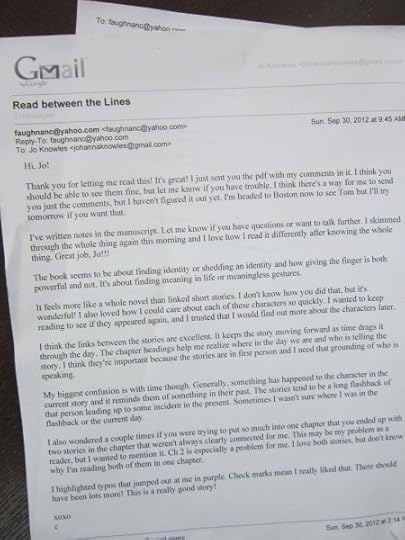
...to chapter to chapter feedback...
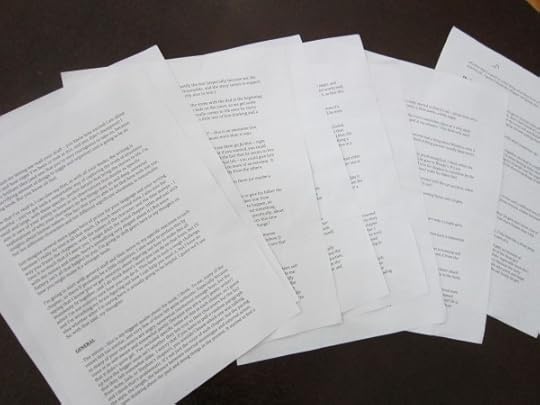
...to feedback on individual characters.
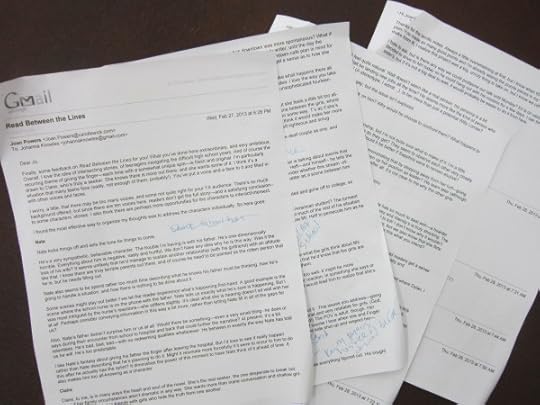
(In addition, I have electronic notes from another critique partner which I'll have open on my screen.)
It's a lot to take in, process and organize. This book has ten points of view and takes place in one day, with all of the characters' stories overlapping. Timing, pacing and point of view are a bit complicated (I have just made an understatement).
This is when my storyboard comes in handy. It helps me stay grounded and remember the core importance/significance of each chapter (probably not abundantly clear to you from the image below, but it is to me).
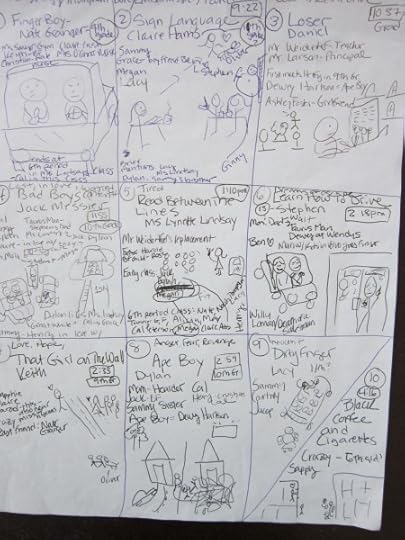
I can look at each square after I read the comments and then take additional notes on what I need to address. I'm going to print out a clean copy of each chapter and mark up the changes, as there are a lot of notes I need to keep track of as well. Some chapters need to be completely rewritten so in those cases, I'll just start a new blank file (I just whimpered).
I also have a more basic chart (listing character and chapter title) that helps me see at a quick glance how the characters are connected, and which side characters appear in each chapter. In this revision, I need to make more connections, so this will help me keep track of that as well.
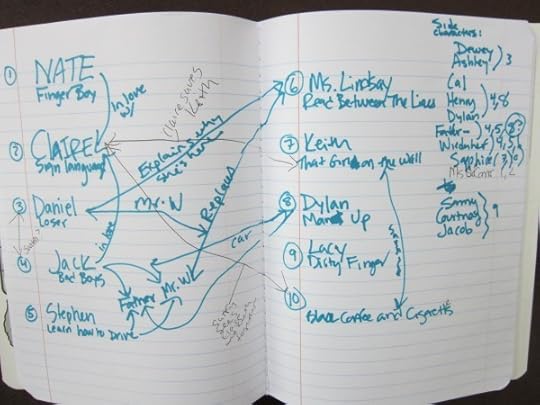
As I go, I plan to create a new page like this for each chapter/character.
[[Edited to add: Here is what my first character/chapter notes look like (I've incorporated everyone's comments, as well as my own concerns, as well as just the basic notes on who appears in the chapter):
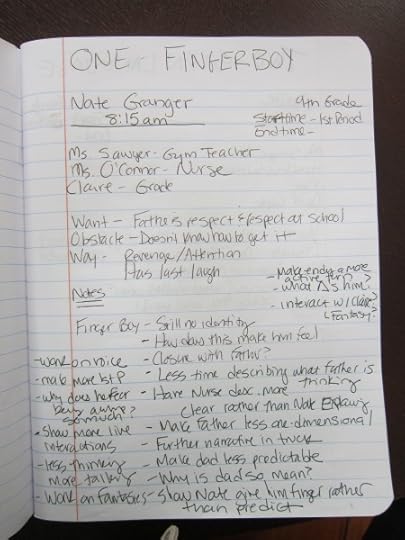
Notice the WOW Section: "Want" (what does your character want) "Obstacle" (what is keeping your character from gettng what he/she wants) "Way" (how is your character going to get the want). I think I learned this from Cindy Lord. Cindy, please correct me if I'm wrong. You should know these three things for your character for every scene/chapter and for the total book arc as well. Again, defining the WOW helps anchor me to the cause and stay focused.]]
Sometimes, I wonder what I was thinking when I started this project. Did I try to do too much? Is it just a big mess? I have been working on this book in bits and pieces since I got the idea ten years ago.
I don't want to give up.
I hate giving up.
So, I have made some comfort tea, with milk and honey.
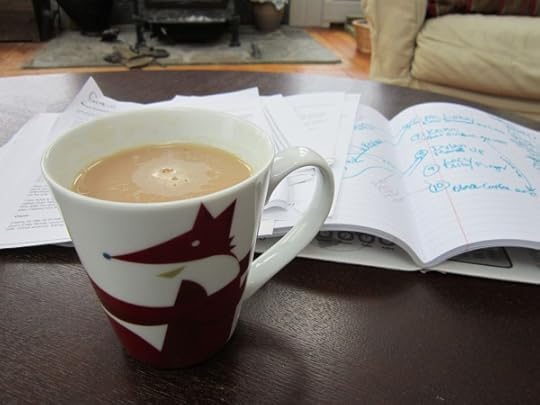
And dug up an old promise from a friend.
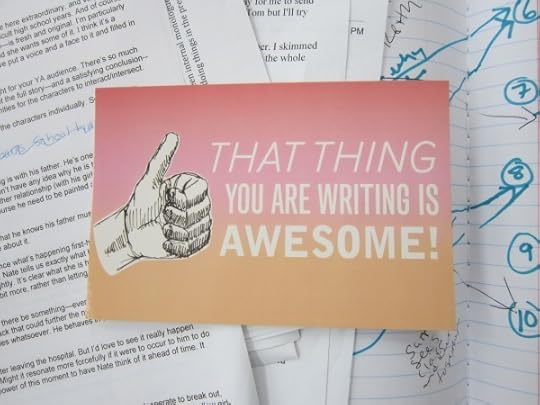
There's only one way to make this project come together and be that thing I want it to be.
I have to do the work. Starting... now.
~*~*~*~*~*~*~
Monday Morning Warm-Up:
Share one of your tools of the trade! :-)
One of the things writers ask me over and over again is "How do you revise?" It's a tough question because my approach has been a bit different with every book. For this book, I have a lot of incredibly helpful notes from friends/critique partners and my editor. These range from general feedback...

...to chapter to chapter feedback...

...to feedback on individual characters.

(In addition, I have electronic notes from another critique partner which I'll have open on my screen.)
It's a lot to take in, process and organize. This book has ten points of view and takes place in one day, with all of the characters' stories overlapping. Timing, pacing and point of view are a bit complicated (I have just made an understatement).
This is when my storyboard comes in handy. It helps me stay grounded and remember the core importance/significance of each chapter (probably not abundantly clear to you from the image below, but it is to me).

I can look at each square after I read the comments and then take additional notes on what I need to address. I'm going to print out a clean copy of each chapter and mark up the changes, as there are a lot of notes I need to keep track of as well. Some chapters need to be completely rewritten so in those cases, I'll just start a new blank file (I just whimpered).
I also have a more basic chart (listing character and chapter title) that helps me see at a quick glance how the characters are connected, and which side characters appear in each chapter. In this revision, I need to make more connections, so this will help me keep track of that as well.

As I go, I plan to create a new page like this for each chapter/character.
[[Edited to add: Here is what my first character/chapter notes look like (I've incorporated everyone's comments, as well as my own concerns, as well as just the basic notes on who appears in the chapter):

Notice the WOW Section: "Want" (what does your character want) "Obstacle" (what is keeping your character from gettng what he/she wants) "Way" (how is your character going to get the want). I think I learned this from Cindy Lord. Cindy, please correct me if I'm wrong. You should know these three things for your character for every scene/chapter and for the total book arc as well. Again, defining the WOW helps anchor me to the cause and stay focused.]]
Sometimes, I wonder what I was thinking when I started this project. Did I try to do too much? Is it just a big mess? I have been working on this book in bits and pieces since I got the idea ten years ago.
I don't want to give up.
I hate giving up.
So, I have made some comfort tea, with milk and honey.

And dug up an old promise from a friend.

There's only one way to make this project come together and be that thing I want it to be.
I have to do the work. Starting... now.
~*~*~*~*~*~*~
Monday Morning Warm-Up:
Share one of your tools of the trade! :-)
Published on March 04, 2013 05:37
No comments have been added yet.



